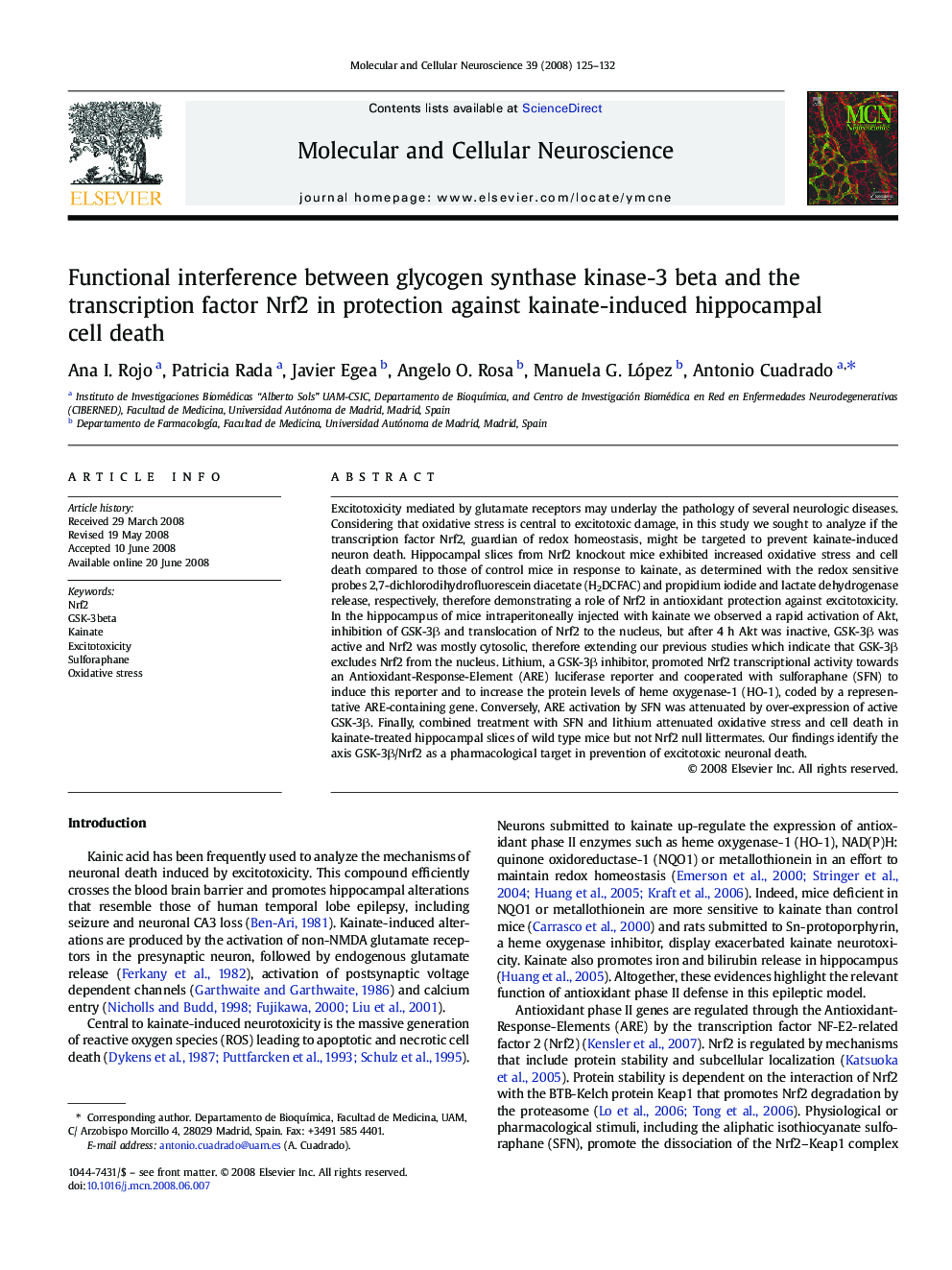| Article ID | Journal | Published Year | Pages | File Type |
|---|---|---|---|---|
| 2199008 | Molecular and Cellular Neuroscience | 2008 | 8 Pages |
Excitotoxicity mediated by glutamate receptors may underlay the pathology of several neurologic diseases. Considering that oxidative stress is central to excitotoxic damage, in this study we sought to analyze if the transcription factor Nrf2, guardian of redox homeostasis, might be targeted to prevent kainate-induced neuron death. Hippocampal slices from Nrf2 knockout mice exhibited increased oxidative stress and cell death compared to those of control mice in response to kainate, as determined with the redox sensitive probes 2,7-dichlorodihydrofluorescein diacetate (H2DCFAC) and propidium iodide and lactate dehydrogenase release, respectively, therefore demonstrating a role of Nrf2 in antioxidant protection against excitotoxicity. In the hippocampus of mice intraperitoneally injected with kainate we observed a rapid activation of Akt, inhibition of GSK-3β and translocation of Nrf2 to the nucleus, but after 4 h Akt was inactive, GSK-3β was active and Nrf2 was mostly cytosolic, therefore extending our previous studies which indicate that GSK-3β excludes Nrf2 from the nucleus. Lithium, a GSK-3β inhibitor, promoted Nrf2 transcriptional activity towards an Antioxidant-Response-Element (ARE) luciferase reporter and cooperated with sulforaphane (SFN) to induce this reporter and to increase the protein levels of heme oxygenase-1 (HO-1), coded by a representative ARE-containing gene. Conversely, ARE activation by SFN was attenuated by over-expression of active GSK-3β. Finally, combined treatment with SFN and lithium attenuated oxidative stress and cell death in kainate-treated hippocampal slices of wild type mice but not Nrf2 null littermates. Our findings identify the axis GSK-3β/Nrf2 as a pharmacological target in prevention of excitotoxic neuronal death.
